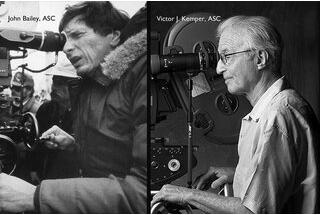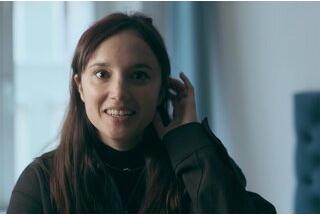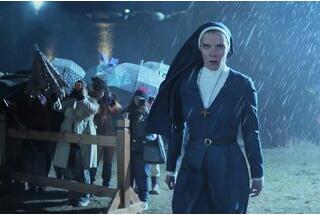Cinematographer Tom Erisman, NSC, discusses his work on "Borgman", directed by Alex van Warmerdam
Holland is being honoured by having this film selected for the competition, something that hasn’t happened since 1975. What is the state of cinema industry in the Kingdom of Orange today?
Tom Erisman: It is always very complicated to put together a film in the Netherlands from a financial point of view. The country is small, there are few institutional sources of funding, and banks aren’t eager to lend to filmmakers. For Borgman, we were obliged to find international co-producers and, moreover, make do with limited means! Because Alex Van Warmerdam is also a reputed painter in modern art circles, he had the idea of pre-selling paintings in exchange for 1000 Euro coupons used for the production of the film. The idea worked pretty well, it even created a media buzz, and he sold enough to meet the film’s budget!
What was your initial reaction when you first went over the project?
TE: When I discovered the script, what first struck me was its completely unpredictable nature. Of course, it is very strange, when you dig beneath the appearances of the life of this bourgeois family of the Dutch upper class. So I immediately decided to adopt a particularly naturalist approach to the lighting and image in order not to add to the bizarre and almost surrealist side that Alex was going to explore... Alex is an actor himself and his engagement with the characters in his film was total. I too felt the need to identify very strongly with this couple and especially the wife who is at the origin of the story, since it is she who convinces her husband to help Borgman at the beginning of the film and allows him to slowly become involved in their lives. This is why I was very careful to show her to her best advantage in every scene she appears in and to make her softer and as likeable as possible. In my opinion, this only made the end of the move more effective. From another point of view, the character of Borgman, on the contrary, had to remain as mysterious as possible throughout the film. I tried, most of the time, to maintain as much contrast as possible by using very little “fill light” on his face.
You know Alex Van Warmerdam well and have made a number of movies with him...What is your shared approach to making films?
TE: Alex is a director who spends a lot of time preparing his films. For months, we meet to discuss and create the shooting script. Generally, that leads to the fabrication of a storyboard, which is then used as the basis for filming. But, because the script can change, the storyboard changes with it. But he really needs that precision. I think that is because he is also an artist, communication via a sketch or a drawing is something that is fundamental to him. Most of the time, I am the one who suggests a shot or a specific way to film a scene. We discuss it together, and then eventually he literally draws the scene on a sketchbook. Once he is satisfied, he turns the page and starts on the next scene.
In the case of Borgman, the great majority of the film takes place in the main couple’s house...how did you choose the house?
TE: Alex is also very demanding when it comes to sets. A large part of this film’s budget went into decorating the Van Schendel’s home. We literally built the set in the middle of the woods, entirely out of wood, but we made it look like concrete. The place we chose was close to the shore, about 30 km away from Amsterdam. Our choice of location was unfortunately rather restricted because it is a protected nature zone and it was very difficult to obtain a construction permit, even though the house was entirely demolished after filming. We paid great attention to the house’s orientation in terms of the sun, as well as to the windows, which played a great role because there are lots of large windows, just as one often finds in contemporary Dutch homes.
Was this an ideal solution for you?
TE: It was like filming in a natural setting but with the flexibility of an indoor studio. There were a couple of floors with the bedrooms and the bathroom. It was like being inside a real home, but with the ability to move some of the walls around. Importantly, I was able to ask the decorator for a glass roof instead of an opaque one, which opened up loads of opportunities in terms of lighting. Whether during the day, when I sometimes used direct sunlight for certain scenes, or at night, when I generated a low level of light by placing a couple of light sources here and there, either using props or minimalist projectors.
What equipment did you use for filming?
TE: Because Alex had always worked using traditional film, we had planned to film Borgman in 35mm. But budgetary constraints forced us to film in digital, and I chose the Arri Alexa, not because I’m captivated by the images it produces, but simply because it’s now become the camera you can’t avoid. It was also risky for us to use regular film, because we would have had to send the negatives to Germany or to France to be developed. It was too much work given the effort we had to put in to find funding.
Were there some scenes that were more difficult than others?
TE: The scenes that take place in the underground tunnel. Especially one where Borgman escapes, and another where we are ahead of him in the tunnel. In that type of situation, you can’t light with anything else but prop light sources. So it’s only lit using an electric torch held by the actor. In order to make it move, my gaffer and I devised the following solution: we put the Alexa on a little sled attached to a string dragged in front of the crawling actor. The result was a little shaky...but that added to the suspense of the scene. The tunnel set was really great, it was one of the best times we had during shooting!
Could you say a word about the lighting, especially night-time scenes?
TE: The house was really very large. For the night scenes, I almost always had a light source outside that allowed me to direct the light through the glass windows or the glass roof to light the innermost parts of the set. To light the forest as a backdrop, I often used a Dino Light with a half-blue filter and some “white diffusion”. For the garden shots in foreground, I instead used Chinese lanterns that I hung high up on posts. Lastly, to re-light the inside, I used Kino Flos that I softened with “white diffusion”, in addition to the prop sources.
Did you use filters?
TE: Indeed, when I film in 35 mm, I sometimes filter. But I felt that filters, especially diffusion filters, didn’t react the same way at all with the Alexa’s digital sensor. So I avoided using them, except maybe a light Soft FX on a few close-ups. To tell you the truth, I’m not yet experienced enough in digital cinematography to be able to say what filters work the best...
What about the lenses?
TE: I chose to film with Cooke S4s with medium- or short-range focal lengths. I used few long focuses, but sometimes I used a zoom as a telephoto lens. We were often near the actors, the camera was often on our shoulder, and because Alex had a little role in the film as an actor, he left me a completely free hand as to the choice of my lenses. He placed full trust in me so long as I stuck to the storyboard. When he himself was being filmed as an actor, I had a lot more responsibility than just the image, because he has a hard time watching himself act...
 En
En
 Fr
Fr







